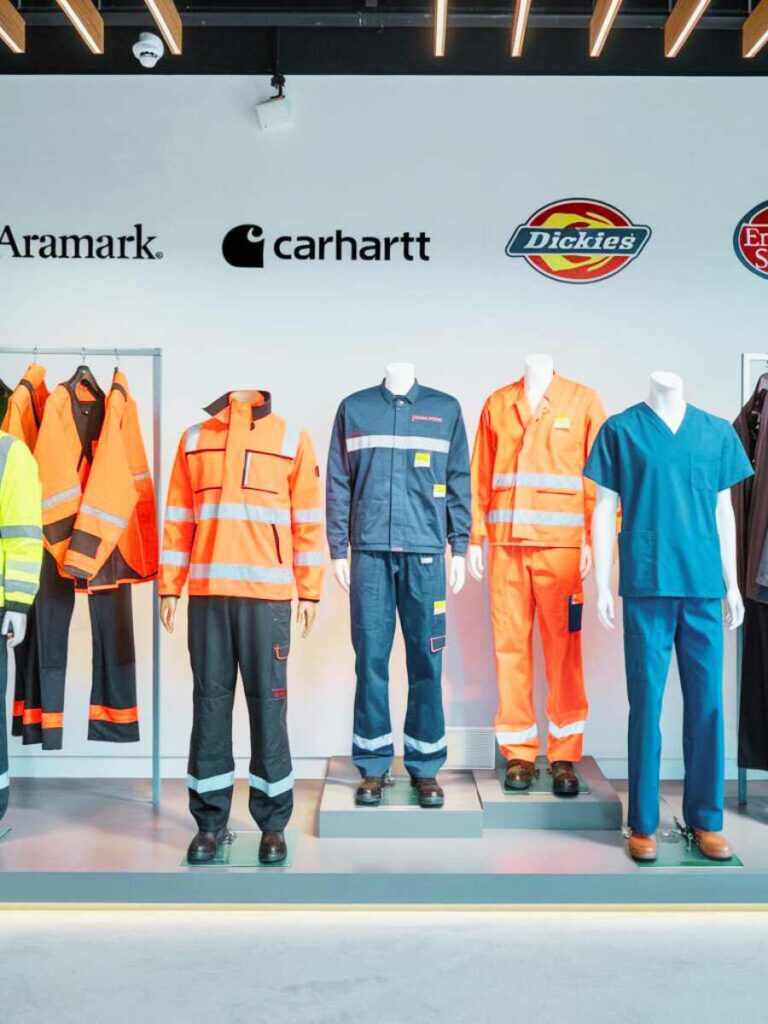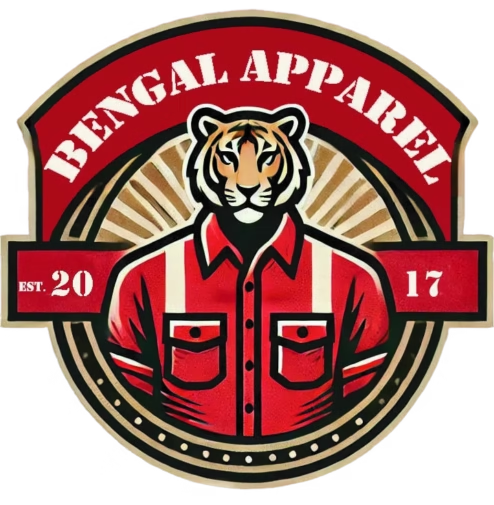In today’s competitive market, businesses face the constant challenge of delivering high-quality uniforms while managing production costs. Striking the right balance between quality and affordability is not just a matter of saving money—it’s a strategic decision that affects brand perception, employee satisfaction, and overall operational efficiency. In this article, we dive into the complex world of workwear production, analyzing the trade-offs between quality and cost and offering actionable insights on balancing durability and affordability in uniform manufacturing.
Introduction
Uniforms serve as the visual representation of a company’s brand and values. For industries ranging from hospitality to industrial services, the durability of workwear is paramount. However, producing high-quality, long-lasting uniforms often comes with higher costs. This dilemma raises a critical question: How can businesses achieve both durability and affordability in uniform manufacturing? By understanding the factors that drive quality and cost, companies can make informed decisions that meet their budget requirements without sacrificing performance.
The process of balancing durability and affordability in uniform manufacturing involves evaluating material choices, production methods, and design innovations. In this article, we explore these factors, discuss the inherent trade-offs, and present strategies that enable businesses to optimize both quality and cost.
Understanding the Quality-Cost Equation
The quality of a uniform is determined by its material composition, construction, and overall design. High-quality uniforms are engineered to withstand harsh conditions, repeated washing, and extensive wear and tear. They contribute to employee safety, comfort, and a strong corporate image. On the other hand, cost considerations involve raw material prices, production methods, labor expenses, and logistical factors.
When examining balancing durability and affordability in uniform manufacturing, the quality-cost equation plays a crucial role. Companies must evaluate:
- Material Quality: Premium fabrics and advanced polymers offer superior durability but come at a higher price.
- Manufacturing Process: Automated, precise production processes may reduce labor costs and improve consistency, but initial investments in technology can be steep.
- Design Complexity: Innovative designs with additional features such as moisture-wicking, fire resistance, or enhanced ergonomics add value but also increase production expenses.
Balancing these elements is key to achieving uniforms that offer long-term savings through durability while staying within budget constraints.
Factors Affecting Quality in Uniform Manufacturing
Material Selection
The choice of fabric significantly impacts the uniform’s durability and comfort. Natural fibers like cotton provide breathability and comfort but may not be as durable or resistant to stains as synthetic options. Conversely, synthetic fibers such as polyester, nylon, and advanced polymers offer enhanced strength and longevity. However, they can sometimes lack the natural feel and may cost more.
- Cotton: Offers excellent comfort and breathability but may fade or wear out faster in demanding environments.
- Polyester and Nylon: Provide superior durability, resistance to shrinkage, and better color retention.
- Advanced Polymers: Incorporate innovative features such as enhanced moisture management, UV protection, and fire resistance, delivering high performance at a premium price.
Construction and Stitching
The construction quality of uniforms, including stitching, seams, and reinforcements, plays a pivotal role in durability. Uniforms that use double-stitching, reinforced panels, and quality thread can withstand rigorous use, reducing the need for frequent replacements. Investing in superior construction methods can lead to higher upfront costs but results in long-term savings by reducing maintenance and replacement expenses.
Design and Ergonomics
The design of a uniform isn’t solely about aesthetics; it also encompasses functionality and ergonomics. Uniforms designed with proper fit, flexibility, and user comfort improve employee productivity. Features like adjustable elements, multiple pockets, and ergonomic cuts add value by enhancing comfort and usability. However, these design enhancements may increase production costs.
Compliance and Safety Standards
In industries where safety is critical, uniforms must meet specific compliance standards. High-visibility workwear, for example, requires reflective materials and specialized designs to meet ANSI or OSHA standards. Ensuring compliance often necessitates additional investments in materials and testing, contributing to higher costs.
Cost Drivers in Uniform Manufacturing
Understanding the cost drivers helps businesses navigate the challenge of balancing durability and affordability in uniform manufacturing.
Raw Material Costs
The price of raw materials varies based on quality, supply chain factors, and market demand. Premium fabrics and advanced materials typically cost more. Businesses must weigh the long-term benefits of investing in superior materials against their budget constraints.
Labor and Production Expenses
Labor costs significantly influence the overall expense of uniform manufacturing. Countries with lower labor costs may offer affordable production options, but quality control becomes paramount. Investing in modern machinery and automated production lines can enhance quality and consistency while potentially reducing long-term labor costs.
Design and Development
Developing innovative and functional designs requires research, prototyping, and testing. While the upfront costs for design innovation can be high, they are offset by the increased value and longevity of the final product. This stage is crucial in achieving balancing durability and affordability in uniform manufacturing because a well-designed uniform minimizes the need for frequent updates or replacements.
Compliance and Certification
For uniforms used in regulated industries, ensuring compliance with safety and quality standards is non-negotiable. The cost of certification and rigorous testing can add to the overall expense, but these measures guarantee that the uniforms meet essential safety requirements and perform reliably under harsh conditions.
Supply Chain and Logistics
Efficient supply chain management is critical in controlling costs. Manufacturers in regions like Bangladesh often leverage economies of scale, lower labor costs, and proximity to raw material suppliers to produce uniforms affordably. Streamlined logistics, effective inventory management, and bulk production can further reduce expenses.
Strategies for Balancing Durability and Affordability
Achieving the right balance between durability and affordability requires strategic planning and smart decision-making. Here are several strategies that can help businesses strike this balance:
- Optimize Material Blends
One effective way to balance quality and cost is to use blended fabrics. Combining natural fibers with synthetic materials can yield uniforms that benefit from the strengths of both—comfort and breathability from cotton, and durability and resistance from polyester or nylon. This approach often results in a cost-effective solution that does not compromise on performance.
- Invest in Advanced Production Techniques
Modern production technologies, such as digital fabric printing, automated cutting, and computerized stitching machines, enhance precision and consistency. While the initial investment might be high, these technologies reduce production errors and material waste over time. Improved quality control ensures that each uniform meets stringent durability standards without escalating costs.
- Leverage Local Manufacturing Advantages
Countries like Bangladesh are renowned for their efficient uniform manufacturing capabilities. By partnering with local manufacturers, businesses can take advantage of competitive pricing and high production volumes. Local manufacturing not only reduces transportation costs and lead times but also allows for closer quality monitoring and faster adjustments based on feedback.
- Emphasize Design for Longevity
Design choices greatly influence a uniform’s lifespan. Prioritize features that contribute to durability, such as reinforced seams, double stitching, and quality fastenings. Although these enhancements may increase the production cost, they significantly extend the uniform’s service life, ultimately lowering the total cost of ownership.
- Implement Rigorous Quality Control Measures
Quality control is critical in maintaining the balance between cost and durability. Regular inspections, standardized testing procedures, and feedback loops ensure that any defects are identified early. Investing in quality control processes minimizes the risk of producing low-quality uniforms that could lead to increased replacement costs and damaged brand reputation.
- Adopt a Lifecycle Cost Approach
Instead of focusing solely on the initial purchase price, businesses should evaluate the total lifecycle cost of uniforms. This approach considers not only the upfront cost but also expenses related to maintenance, cleaning, repairs, and eventual replacement. A uniform that costs a bit more upfront but lasts longer and requires less maintenance is more cost-effective in the long run.
- Foster Strong Manufacturer Relationships
Developing long-term relationships with reliable manufacturers can lead to better pricing, improved quality, and more customized solutions. Regular communication and collaboration ensure that manufacturers understand your quality requirements and work within your budget constraints. This partnership approach can result in more innovative solutions that achieve both durability and affordability.
- Explore Customization Options
Customization can add value without significantly increasing costs. Custom designs that align with your brand can be produced in bulk to lower unit costs. Look for manufacturers that offer flexible customization options and cost-effective design revisions. Tailoring uniforms to specific job requirements can enhance functionality and durability, ensuring that the uniforms serve your workforce effectively.
Case Study: Achieving the Balance in Practice
Consider a mid-sized construction company that struggled with frequent uniform replacements and high maintenance costs due to low-quality workwear. By re-evaluating their uniform procurement strategy, the company partnered with a reputable manufacturer in Bangladesh known for balancing durability and affordability in uniform manufacturing.
The Strategy:
- Material Selection: The manufacturer proposed a fabric blend combining cotton for comfort and polyester for durability, creating a workwear solution that was both robust and comfortable.
- Enhanced Design: Reinforced seams, double stitching, and ergonomic designs were introduced, ensuring that the uniforms could withstand the rigors of construction work.
- Lifecycle Cost Analysis: The company conducted a lifecycle cost analysis, revealing that the slightly higher upfront cost was offset by longer uniform life and lower maintenance expenses.
- Quality Control: Rigorous quality control measures ensured consistent production standards, resulting in fewer defective products and reduced downtime.
The Outcome:
The construction company experienced a significant reduction in uniform replacement frequency and maintenance costs. Employees reported higher satisfaction with the improved comfort and durability of the new uniforms, and the company’s brand image benefited from the professional appearance of the workforce. This case underscores the importance of strategic planning and collaboration in balancing durability and affordability in uniform manufacturing.
The Future of Uniform Manufacturing: Trends to Watch
The landscape of uniform manufacturing is evolving rapidly with advancements in technology and changing consumer expectations. Here are some trends that will influence how businesses approach balancing durability and affordability in uniform manufacturing:
Smart Fabrics and Wearable Technology
Innovations in textile technology are giving rise to smart fabrics that monitor temperature, track wear, and even adjust to environmental conditions. Although these innovations currently come at a premium, mass adoption and technological improvements are likely to drive costs down over time.
Sustainable Manufacturing Practices
Sustainability is no longer a buzzword—it’s an industry imperative. Manufacturers are increasingly using recycled materials, eco-friendly dyes, and energy-efficient production processes. These practices not only reduce environmental impact but also contribute to long-term cost savings through more efficient resource use.
Customization and Personalization
The demand for customized uniforms tailored to specific industry needs is on the rise. Manufacturers are investing in digital technologies that enable flexible production runs, reducing waste and improving fit. Personalized uniforms can enhance brand identity and employee satisfaction while remaining cost-effective.
Global Supply Chain Integration
Countries like Bangladesh continue to play a pivotal role in uniform manufacturing due to their cost-effective production capabilities. As global supply chains become more integrated and transparent, businesses can expect more competitive pricing and improved quality control, helping them achieve a better balance between cost and durability.
Conclusion
Balancing durability and affordability in uniform manufacturing is not an either-or proposition. By understanding the key factors that drive quality and cost, businesses can make informed decisions that yield long-term benefits. High-quality uniforms enhance brand image, improve employee satisfaction, and reduce overall expenses through extended lifecycle and lower maintenance costs.
By optimizing material blends, investing in advanced production techniques, leveraging local manufacturing expertise, and adopting rigorous quality control measures, companies can strike the perfect balance between durability and affordability. As the uniform manufacturing landscape continues to evolve with technological innovations and sustainable practices, businesses that embrace these strategies will be better positioned to meet the demands of a competitive market.
Investing in robust, high-quality workwear is a strategic decision that pays dividends over time. It is a testament to a company’s commitment to its employees, safety, and brand reputation. Ultimately, the key lies in a comprehensive approach that considers the entire lifecycle cost of uniforms—ensuring that every dollar spent today contributes to long-term savings and operational excellence.




